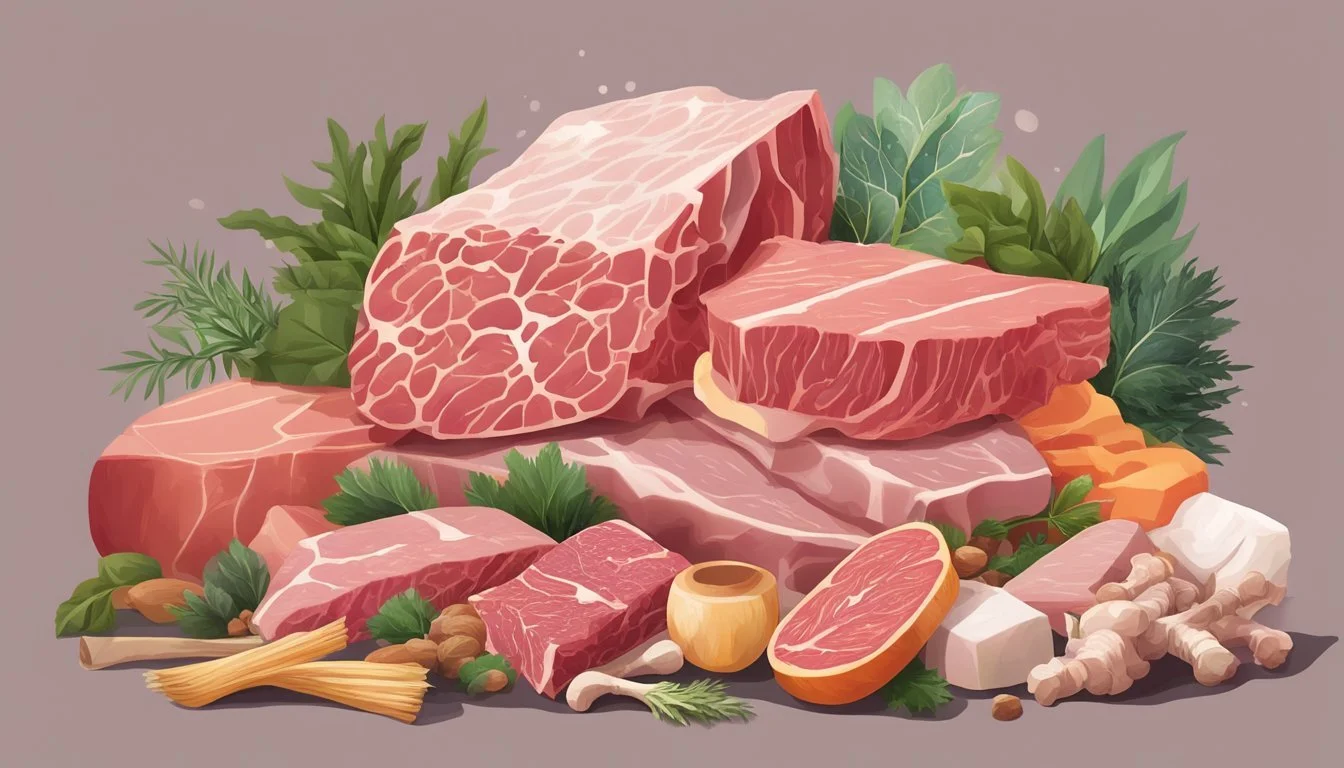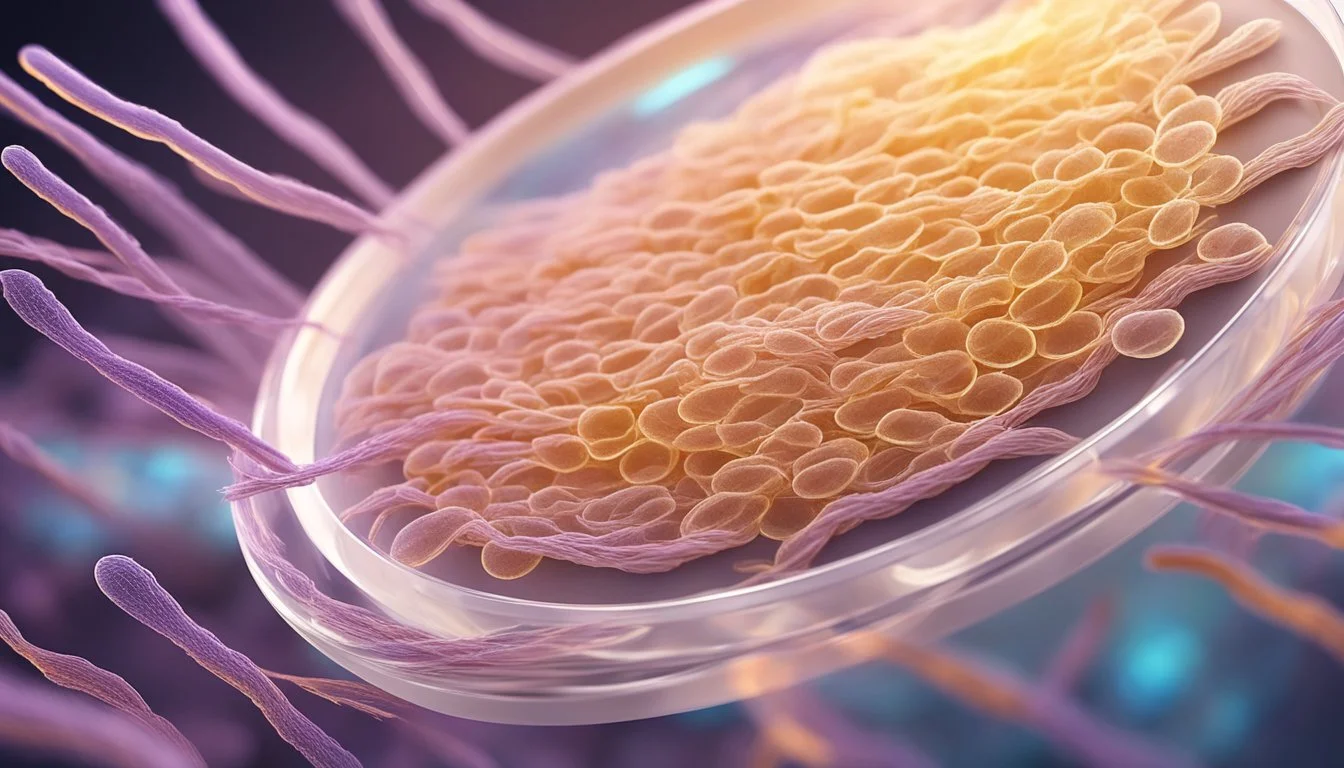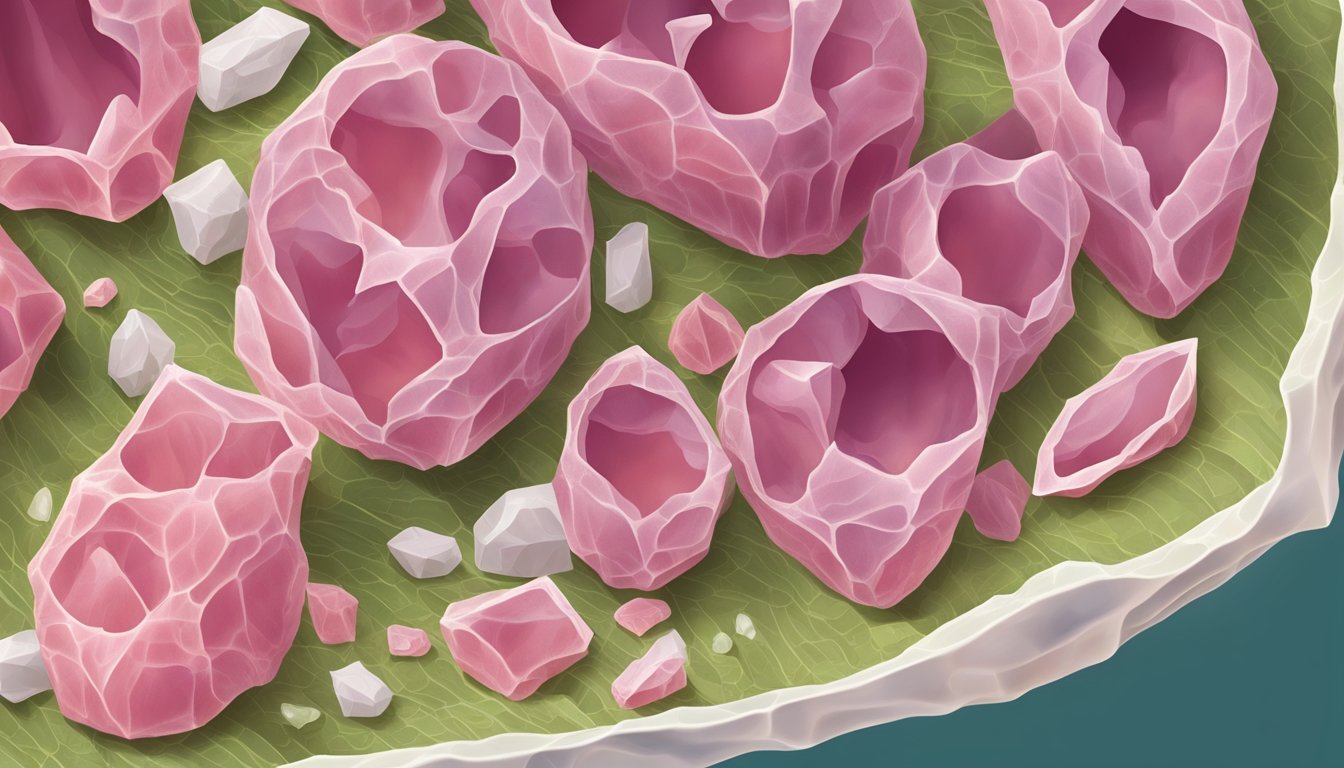Excessive Collagen Intake on a Carnivore Diet
Understanding the Oxalate Risk
The carnivore diet, which emphasizes consuming only animal products, has risen in popularity for its potential health benefits. However, one often overlooked concern is the risk of excessive collagen intake leading to increased oxalate levels. Consuming too much collagen can convert into oxalates in the body, especially if there is an underlying deficiency in vitamin B6 or the presence of Candida.
Individuals following a strict carnivore diet may supplement their intake with collagen-rich foods or supplements to promote skin, joint, and overall health. But this practice harbors potential risks. Elevated oxalate levels can lead to a process called "oxalate dumping," characterized by symptoms such as fatigue, dizziness, joint pain, and skin rashes.
Addressing this risk involves understanding the balance of nutrients and potential repercussions of the diet. Highlighting the importance of monitoring collagen consumption and its conversion into oxalates can provide valuable insights for those committed to a carnivore lifestyle, ensuring both health benefits and reducing the risk of oxalate-related issues.
Understanding the Carnivore Diet
The carnivore diet focuses exclusively on animal-based foods, eliminating all plant-based items. This eating plan emphasizes high protein and fat intake while avoiding carbohydrates.
Definition and Dietary Practices
The carnivore diet is strictly an animal-product-only diet. Participants consume meat, fish, eggs, and some dairy products. The diet eliminates all plant-based foods, including vegetables, fruits, nuts, seeds, and grains. Common food choices often include beef, pork, lamb, poultry, and fish. Fat sources can come from cuts of meat with higher fat content or products like butter and lard. Dairy products are consumed in full-fat forms, such as cheese and heavy cream.
No need to rush; you can take your time finding the perfect lard online!
Popularity and Reasons for Adoption
The diet has gained traction for its potential health benefits, claiming to improve conditions like inflammation, digestion issues, and weight management. Many followers cite significant improvements in physical and mental health. Proponents argue that removing plant foods reduces potential toxins and anti-nutrients, such as oxalates and lectins, found in certain vegetables and grains.
The carnivore diet often appeals to individuals seeking simplicity and a return to ancestral eating patterns. Social media and online communities have further popularized the diet, sharing personal anecdotes and success stories.
Nutrient Profile and Potential Gaps
This diet provides high amounts of protein and fats but completely lacks plant-derived nutrients. Key nutrients from animal products include essential amino acids, vitamins B12, D, and K2, and minerals like iron and zinc. Despite this, there are concerns about potential deficiencies. A diet devoid of plant foods may miss out on fiber, vitamin C, and certain phytonutrients, which play significant roles in overall health.
People on the diet must ensure they consume nutrient-rich organ meats like liver for additional vitamins and minerals. Supplementation or specific dietary strategies may be necessary to cover gaps and maintain balanced nutrition.
Check out customer reviews online to help you choose the best fiber supplement!
Collagen in the Carnivore Diet
Collagen is a key protein in the carnivore diet, primarily sourced from animal tissues rich in connective fibers. This section explores its role, the specific amino acids involved, and the effects of high collagen consumption within this dietary framework.
Role and Sources of Collagen
Collagen is a structural protein found abundantly in animal connective tissues such as skin, tendons, and ligaments. It is crucial for maintaining skin elasticity, joint health, and overall tissue integrity.
Primary sources on the carnivore diet include:
Cuts of meat with connective tissues
Bone broth from boiling bones and cartilage
Organ meats like heart and liver
These foods provide high levels of collagen, which can be particularly beneficial for joint health and skin quality.
Collagen and Amino Acids Relationship
Collagen is made up of amino acids, most notably proline, glycine, and hydroxyproline. These amino acids play a vital role in collagen synthesis and maintenance.
Proline aids in skin repair and elasticity. Glycine supports metabolic processes and detoxification in the liver. Hydroxyproline is essential for collagen stability and metabolism.
Together, these amino acids ensure the body can effectively produce and utilize collagen, supporting various structural functions in the body.
The Impact of High Collagen Consumption
While collagen is beneficial, consuming it in excess on a carnivore diet can have drawbacks. High collagen intake might lead to an imbalance in amino acid profiles, potentially causing a deficit in other essential amino acids.
This imbalance can affect overall nutrition and health.
Excessive intake may also increase the body's oxalate levels, contributing to kidney stone risk for susceptible individuals.
Therefore, it is important for those on the carnivore diet to balance their collagen intake with other nutrient-dense animal products to maintain overall health and avoid potential risks.
Oxalates and Health Risks
Oxalates, found in various foods, can pose significant health risks when consumed excessively. These risks particularly concern individuals on specific diets, such as the carnivore diet, where changes in dietary habits may impact oxalate metabolism and absorption.
What Are Oxalates?
Oxalates are organic compounds found in many plants, including vegetables, nuts, and grains. They naturally exist as oxalic acid and can bind with minerals like calcium to form compounds such as calcium oxalate.
Calcium oxalate is a chief component of the most common type of kidney stones. While oxalates can have beneficial antioxidant properties, excessive intake can lead to health issues.
Oxalate Absorption and Metabolism
The body absorbs oxalates through the small intestine. Once absorbed, they travel through the bloodstream to various organs, including the kidneys. Some people absorb oxalates more easily, leading to higher levels in the body, a condition known as hyperoxaluria.
In these individuals, oxalates can crystallize and form calcium oxalate stones, which may cause kidney stones. These stones can lead to significant pain and urinary problems.
Sources of Dietary Oxalate
Many foods high in oxalates include spinach, beets, nuts, and chocolate. These foods can contribute to high oxalate levels when consumed regularly. A table of common high-oxalate foods is shown below:
Food Oxalate Content (mg per serving) Spinach 750 Beet Greens 610 Almonds 120 Dark Chocolate 117
Limiting these foods might be necessary for people prone to oxalate-related conditions.
Medical Conditions Related to Oxalates
High oxalate levels are associated with several medical conditions. Kidney stone formation is a primary concern, especially calcium oxalate stones.
Individuals with inflammatory bowel diseases may face difficulties regulating oxalate absorption, leading to increased risk. Other conditions like hyperoxaluria can result from genetic factors or high dietary oxalate intake.
Understanding the relationship between oxalates and these conditions is crucial for managing risk and maintaining health, especially in specific dietary contexts like the carnivore diet.
Interplay Between Collagen and Oxalate Levels
Excessive intake of collagen on a carnivore diet can influence oxalate absorption and exacerbate risks associated with oxalate, such as the formation of calcium oxalate kidney stones and hyperoxaluria.
Collagen's Effect on Oxalate Absorption
Collagen is rich in amino acids like glycine and proline, crucial for joint and skin health. However, excessive consumption can impact oxalate metabolism. When ingested, some amino acids from collagen may promote gut absorption of dietary oxalate by altering gut microbiota or affecting the gut barrier function.
This can lead to elevated levels of oxalate in the bloodstream. Increased oxalate absorption consequently raises urinary oxalate excretion. For individuals susceptible to kidney stones, this rise in urinary oxalate could elevate the risk of calcium oxalate stone formation. An important consideration is maintaining a balanced intake of collagen-rich foods to avoid these potential complications.
Potential for Exacerbating Oxalate Risks
Excessive collagen intake may lead to increased oxalate levels in the body, potentially exacerbating conditions like hyperoxaluria. Hyperoxaluria, characterized by excessive urinary oxalate excretion, can significantly raise the risk of developing calcium oxalate kidney stones. These stones are the most common type found in kidney stone patients.
Studies indicate that dietary modifications, including reducing high-oxalate foods while managing collagen intake, could mitigate these risks. A diet high in collagen without considering its effects on oxalate metabolism might inadvertently increase oxalate levels, leading to adverse health outcomes. Thus, monitoring and limiting collagen intake could be crucial for individuals prone to oxalate-related issues.
Effects of Excessive Collagen on Kidney Health
Excessive collagen intake, particularly on a carnivore diet, can impact kidney health in various ways. It's crucial to understand the connection between collagen and kidney stones, oxalate nephropathy, and overall renal function.
Link Between Collagen and Kidney Stone Risk
Collagen supplements contain high levels of amino acids like hydroxyproline and glycine. These amino acids can be metabolized into oxalate in the liver. Elevated levels of oxalate increase the risk of kidney stone formation, specifically calcium oxalate stones.
Animal protein, a primary source of collagen, can further exacerbate this risk. It is important for individuals on high-collagen diets to monitor their intake and stay hydrated to minimize this risk.
Understanding Oxalate Nephropathy
Oxalate nephropathy occurs when excessive oxalate levels cause damage to the kidneys. High collagen intake contributes to higher oxalate production. In susceptible individuals, this can lead to kidney damage and impaired function.
Maintaining a balanced diet that includes a variety of protein sources can help reduce the risk. Regular kidney function tests are advisable for those on long-term, high-collagen diets to detect early signs of nephropathy.
Influence of Collagen on Renal Function
Renal function can be influenced by an individual's protein intake. While collagen is beneficial for skin, joints, and bones, overconsumption may strain the kidneys. This is due to the increased load of waste products the kidneys need to filter out, including oxalate.
For individuals with pre-existing kidney conditions, it's particularly important to consult healthcare professionals before significantly increasing collagen intake. Staying within recommended protein intake levels can help maintain healthy kidney function and prevent complications.
Preventing Oxalate-Related Complications
Managing oxalate-related complications on a carnivore diet involves targeted dietary changes, proper hydration, and strategic use of supplements and treatments. Focusing on these areas can effectively mitigate risks.
Dietary Modifications and Low-oxalate Options
Excessive collagen intake can elevate oxalate levels, increasing the risk of kidney stones. Opt for lower-oxalate foods and maintain a balanced intake of diverse proteins. Calcium can help by binding oxalates in the gut, preventing absorption. Magnesium similarly inhibits oxalate absorption and could be included in the diet. Incorporating citrate can reduce urinary concentrations of calcium oxalate, further reducing stone potential.
To reduce oxalate risks, steering clear of high-oxalate foods like spinach and rhubarb is crucial. Replacing them with moderate or low-oxalate vegetables such as zucchini and cucumbers can help manage oxalate levels.
Importance of Hydration
Adequate hydration is vital in preventing oxalate-related complications. Higher fluid intake promotes frequent urination, which helps in the dilution and excretion of oxalates, reducing the risk of crystal and stone formation.
A minimum of 2 to 3 liters of water daily is often recommended for individuals at risk of oxalate stones. Adding citrus juices to the diet can be beneficial because they contain citrate, which inhibits the aggregation of calcium oxalate crystals.
Supplementation and Treatment Strategies
Magnesium and calcium supplements can aid in binding oxalates in the gut, reducing their absorption. Vitamin C should be carefully monitored, as excessive intake can convert to oxalate, worsening the problem. Using probiotics, especially those containing Oxalobacter formigenes, can enhance oxalate degradation in the gut.
Engaging with the gut microbiome is another preventative strategy. Prebiotics that foster a healthy gut environment can support the natural breakdown of oxalates, reducing systemic absorption. Regular consultation with healthcare providers for tailored supplementation plans is advised, ensuring individualized and effective oxalate management.
Online shopping for magnesium, calcium, vitamin C, and probiotics lets you find exactly what you want without any pressure!
Analyzing Related Health Disorders
Excessive collagen intake on a carnivore diet can influence various health disorders associated with oxalate metabolism and absorption. This overview explores primary hyperoxaluria, secondary hyperoxaluria, chronic kidney disease, and their potential systemic associations.
Primary vs Secondary Hyperoxaluria
Primary Hyperoxaluria is a genetic disorder where the liver overproduces oxalate due to enzyme deficiencies. This condition often leads to the formation of kidney stones and other complications because of elevated oxalate levels in the body.
Secondary Hyperoxaluria results from high dietary oxalate intake or increased absorption of oxalate in the intestines. In the context of a carnivore diet, this could potentially occur if dietary factors promote hyperoxaluria, thus increasing the risk of kidney stones.
Impact of Dietary Choices on Chronic Kidney Disease
Individuals with Chronic Kidney Disease (CKD) must be cautious about their dietary oxalate intake. Excessive collagen from animal tissues can elevate oxalate concentrations, stressing already compromised kidneys.
Dietary oxalate management is essential for CKD patients to prevent further progression of the disease. Adjusting the balance between animal and other dietary sources can help minimize oxalate-related risks.
Associations with Other Systemic Conditions
High oxalate levels are not only a risk for kidneys but can also affect other systemic conditions. Hyperoxaluria can aggravate conditions like osteoporosis, as oxalates bind calcium, reducing its availability.
Furthermore, cardiovascular health can be impacted by increased calcium oxalate crystallization, which may contribute to vascular calcification. Managing oxalate intake is crucial to maintaining systemic health while following a carnivore diet.
Conclusion
Excessive Collagen Intake can pose risks when combined with a Carnivore Diet. Although collagen is valuable for joint health and skin elasticity, high amounts might influence oxalate levels in the body.
On a Carnivore Diet, individuals often consume collagen-rich foods like connective tissues. This diet excludes plant-based foods, which can complicate oxalate metabolism and elimination.
Oxalate Risk is a concern due to potential kidney stone formation. Oxalates can bind with calcium, forming crystals that accumulate in the kidneys and joints. Monitoring oxalate levels becomes crucial for kidney stone prevention.
Dietary Recommendations should include balanced collagen consumption. This involves moderating intake and potentially integrating low-oxalate animal sources, while staying mindful of oxalate-rich foods reduction.
Understanding the interplay between collagen intake and oxalate metabolism can guide safer dietary practices and promote overall health.












